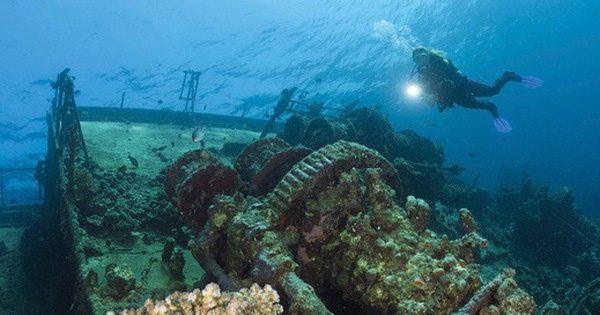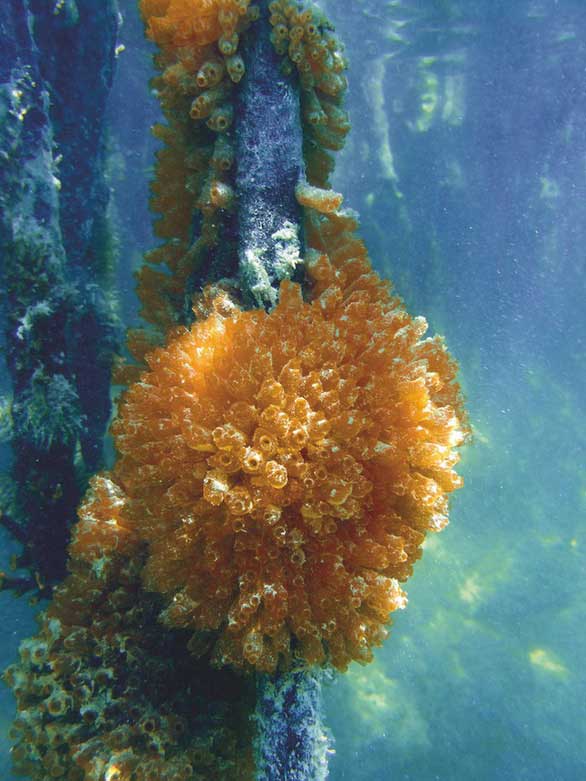Antibiotics are gradually losing their effectiveness against diseases, while superbugs are on the rise worldwide. Scientists are pinning their hopes on oceanic regions that contain substances that could aid in the development of new medications.
According to Science Focus, during an exploration of the ocean floor and while retrieving a sediment sample from Lake Michigan, scientist and explorer Professor Brian Murphy from the University of Illinois at Chicago discovered that it contained bacteria producing two previously unknown molecules.

Many compounds in the sediment of Lake Michigan have the ability to kill bacteria – (Photo: SCIENCE FOCUS)
Laboratory tests have shown that this group of compounds has the potential to kill the bacteria that cause tuberculosis, a disease affecting millions of people worldwide each year.
Murphy stated, “For millions of years, bacteria have been fighting each other. We are just tapping into that power.”
While conversing with recreational divers, Murphy came up with the idea of searching for sponges in shipwreck areas. “Bacteria can make up about 30-40% of the biomass of sponges,” Murphy explained.
Scientists note that the organisms within sponges are almost entirely stationary. They filter water for food and absorb countless bacteria.

Some marine organisms contain anti-cancer substances – (Photo: FLPA)
A rich marine ecosystem with diverse species is an ideal place to search for disease-fighting drugs. Many pharmaceuticals derived from nature have emerged from this ecosystem.
The first is the chemotherapy agent cytarabine, which was approved in the U.S. in 1969. This drug was initially found in a sponge from the Florida Keys coral reef.
Another anti-cancer agent, known as trabectedin, was also discovered in the “medicine cabinet” of sponges. This compound is secreted by a Caribbean sea squid and has been used in Europe since 2007 and in the U.S. since 2015.
According to scientists, beneficial life for humans exists all over the Earth, from the icy polar seas to the fiery hot volcanic vents, from coral reefs to inland lakes, and across the vast “realm” of water that covers 70% of our planet.
These include many species that have evolved, capable of resisting complex chemicals, along with numerous types of bacteria. This is the foundation for the invention of new drugs.
An international group known as PharmaSea, led by Professor Marcel Jaspars, is currently searching for new antibiotics on the deep sea floor, including beneath the ocean’s trenches—its deepest parts.
Professor Jaspars describes these as “dark islands,” which sink to the ocean floor instead of rising. “It’s possible that organisms have evolved separately for millions of years in each trench,” he said.
Jaspars and his team have sent unmanned submersibles down to depths of several kilometers to collect sediment filled with unique bacteria. They have conducted approximately 100,000 tests, aiming to find ESKAPE pathogens (an acronym that includes the scientific names of six highly virulent and antibiotic-resistant bacteria: Enterococcus faecium, Staphylococcus aureus, Klebsiella pneumoniae, Acinetobacter baumannii, Pseudomonas aeruginosa, and Enterobacter spp). This group of six bacterial strains is showing increasing resistance to many existing antibiotics.
Ultimately, the PharmaSea team aims to narrow down two compounds that can be produced on a larger scale and enter preclinical trials. So far, their most promising discovery involves compounds that may help combat neurological diseases, especially epilepsy and Alzheimer’s disease.


















































